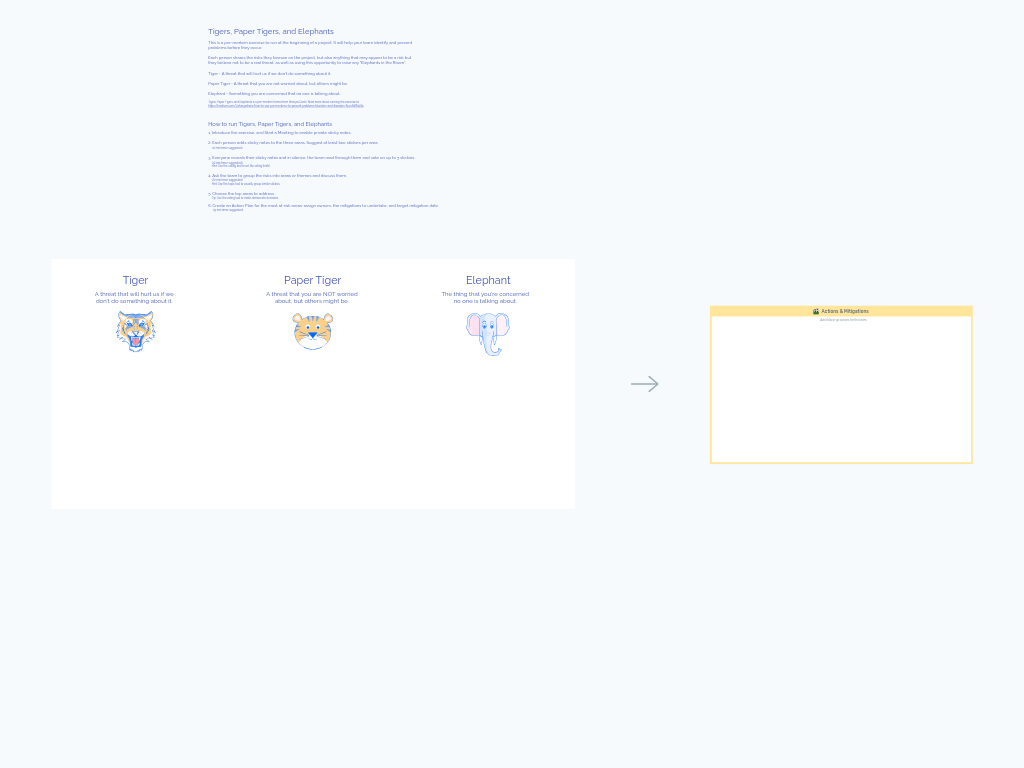One Page Test Plan
Create clear, concise test plans that your entire development team will actually read and follow. This collaborative template simplifies test planning by focusing on the essential elements of your testing strategy on a single page—perfect for sprint planning or project kickoffs.
What Is a One Page Test Plan?
The One Page Test Plan is a streamlined approach to test planning that condenses all critical testing information onto a single, easy-to-digest page. Inspired by Claire Reckless's methodology, this template eliminates the traditional lengthy test documentation that often goes unread, replacing it with a focused overview that promotes team alignment and clarity.
Unlike conventional test plans that can span dozens of pages, this format captures only what matters most:
- Clear testing objectives and scope
- Essential testing boundaries and exclusions
- Identified risks and assumptions
- Resource and timeline information
Benefits & When to Use
This template is particularly valuable when:
- Launching a new sprint or development cycle
- Bringing new team members up to speed quickly
- Needing stakeholder buy-in on testing approach
- Working with cross-functional teams who need clarity without technical jargon
- Aligning distributed teams on testing priorities
Key benefits include:
- Improved Communication: Creates a single source of truth for testing priorities
- Better Team Alignment: Ensures everyone understands what will and won't be tested
- Time Efficiency: Reduces document creation and maintenance overhead
- Increased Test Coverage: Helps identify gaps in testing strategy before work begins
- Risk Management: Proactively identifies and mitigates potential testing challenges
How to Run a One Page Test Plan Session
Total time: 45-60 minutes
Prepare the Template (5 minutes)
- Fill in the project name, author, and date at the top of the template
- If possible, send the template to participants beforehand for preliminary thinking
Introduction (5-10 minutes)
- Explain the purpose of today's session: to create a comprehensive test plan that fits on one page
- Emphasize that this will serve as the reference document for all testing activities
- Review the different sections of the template and how they work together
Complete the Introduction Section (5-10 minutes)
- Document what you're testing and why
- Capture the product and business goals
- Articulate the customer value proposition
Define Scope (10-15 minutes)
- In the "In Scope" section: List features, components, and functionality that will be tested
- In the "Out of Scope" section: Explicitly document what will NOT be tested
- Discuss and resolve any disagreements about testing boundaries
Identify Risks, Assumptions, and Resources (10-15 minutes)
- Risks: Document potential issues that could impact testing effectiveness
- Assumptions: Capture underlying premises that shape your testing approach
- People: List all stakeholders involved in testing and their availability
- Timescales: Define the testing window and any milestone dates
- Environments & Tools: Document where testing will occur and what tools are needed
Review and Finalize (5 minutes)
- Have the team review the completed plan together
- Make any necessary adjustments based on feedback
- Ensure there's team consensus on the final plan
Tips for a Successful One Page Test Plan
- Keep it genuinely brief: If you can't fit your test plan on one page, you're likely including too much detail
- Be specific with scope boundaries: Clear scope definition prevents misunderstandings later
- Update as needed: Treat this as a living document that evolves with your project
- Make it visible: Share the test plan in team spaces or link to it in project documentation
- Review before development: Get team alignment on the test plan before coding begins
- Include diverse perspectives: Involve QA specialists, developers, product owners, and other stakeholders
- Consider automation scope: Clearly indicate which areas will rely on automated testing versus manual
- Document dependencies: Note any external dependencies that might impact your testing timeline
For distributed teams, this template is especially valuable as it creates a visual, collaborative space where everyone can contribute to the test planning process, regardless of location.



